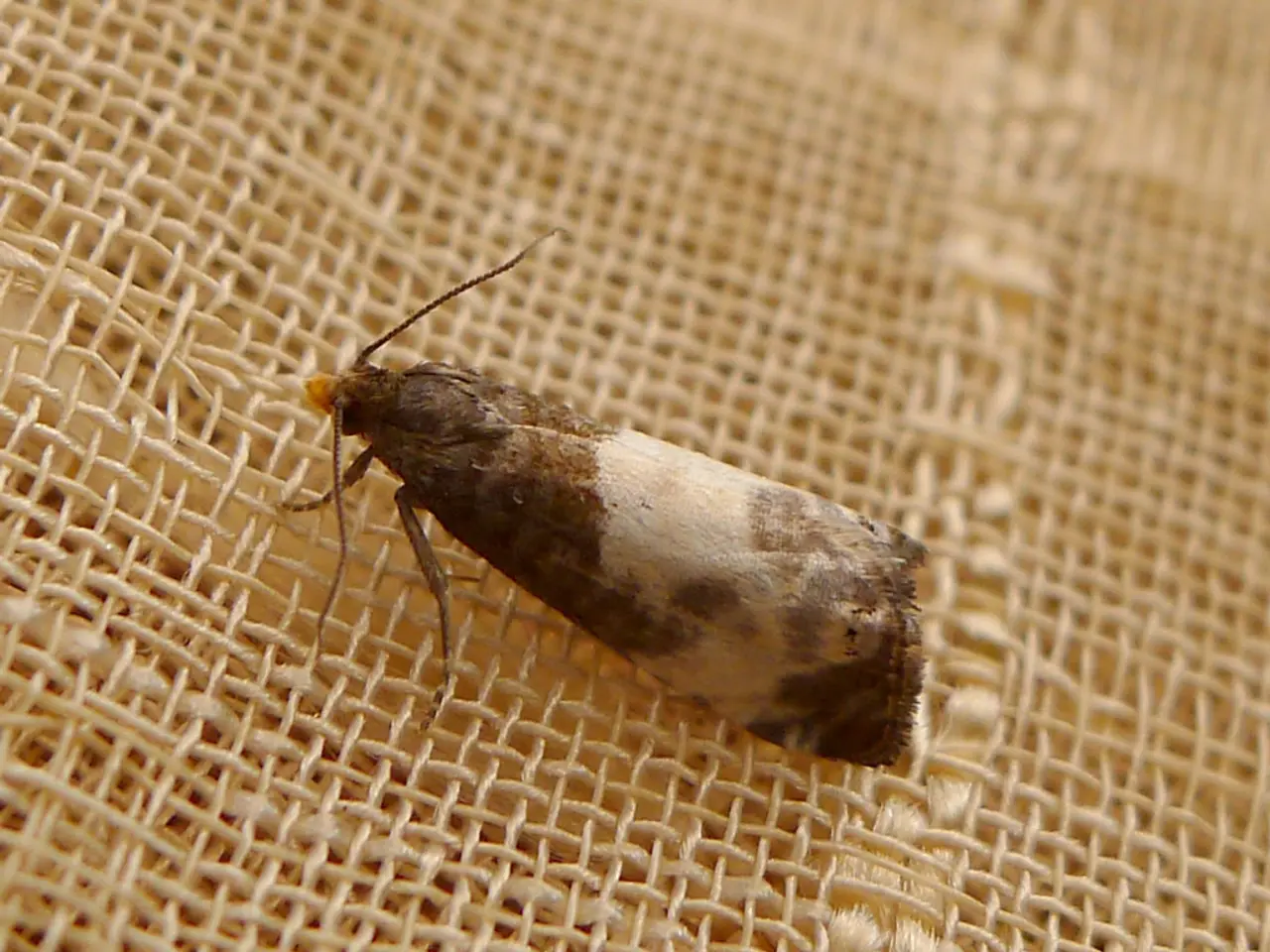Rising tick population and associated illnesses observed among Pennsylvania researchers
In the year 2022, Pennsylvania has witnessed a significant increase in tick activity, with the Asian Longhorned tick becoming a growing concern. This surge in tick populations has heightened concerns about tick-borne diseases such as Lyme disease, affecting all 67 counties in the state[1][2].
The causes of this increase are multi-faceted. Environmental factors, such as warm temperatures and increased humidity, have boosted tick populations. Ticks thrive in grassy and wooded areas, and their spread into urban environments has also been observed[1]. The presence of deer and small mammals, which are hosts for ticks, supports tick population growth. Additionally, the Asian Longhorned tick, an invasive species, has been reported with increasing frequency in Pennsylvania. This tick is notable for its ability to reproduce rapidly and infest a variety of hosts, including humans, livestock, and pets[1].
Symptoms of tick-borne illnesses, including Lyme disease, often include fever, chills, fatigue, headache, muscle and joint aches, and sometimes a characteristic bull's-eye rash (erythema migrans). If untreated, Lyme disease can spread to affect joints, the heart, and the nervous system, potentially causing serious complications[1][2]. Symptoms related to diseases transmitted by other ticks like the Asian Longhorned tick can vary, but they generally include fever and malaise, though research is ongoing on specific illnesses transmitted by this species.
To combat this rise in tick activity, Pennsylvania officials strongly urge the public to adopt several key preventive measures during outdoor activities. These include using EPA-approved insect repellents containing DEET, picaridin, or IR3535, wearing protective clothing such as long sleeves and pants, performing tick checks immediately after being outdoors, showering soon after outdoor exposure, treating pets with veterinarian-recommended tick control products, drying clothes on high heat, and avoiding tall grasses and brush where ticks are most abundant[1][2].
Surveillance and public awareness are also crucial in managing the tick situation. The Pennsylvania Departments of Health (DOH), Conservation and Natural Resources (DCNR), and Environmental Protection (DEP) continuously monitor tick populations and tick-borne disease cases and maintain public dashboards for awareness. Education campaigns emphasize the importance of preparation and awareness to reduce Lyme disease and other tick-bite related illnesses[1][2].
In conclusion, the increased tick activity in Pennsylvania during 2022, including the rise of the invasive Asian Longhorned tick, is driven by ecological conditions favorable for ticks and expanding host populations. Vigilance, preventive behaviors, and public health monitoring remain critical to reducing the risk of tick-borne diseases such as Lyme disease[1][2].
References: [1] Pennsylvania Department of Health. (2022). Tick-Borne Diseases. Retrieved from https://www.health.pa.gov/topics/disease/tickborne/pages/default.aspx [2] Pennsylvania Department of Conservation and Natural Resources. (2022). Tick-Borne Diseases. Retrieved from https://www.dcnr.pa.gov/StateParks/FindAPark/Pages/TickBorneDiseases.aspx
- Science has been instrumental in understanding the causes of the increased tick activity in Pennsylvania.
- Environmental science, particularly studies on climate change, has highlighted the role of warm temperatures and increased humidity in boosting tick populations.
- The workplace-wellness industry has been advocating for awareness and preventive measures to combat tick-borne diseases.
- Medical conditions like Lyme disease, triggered by tick bites, have become a growing concern for the health-and-wellness sector.
- Chronic diseases, such as Lyme disease, can have serious complications if left untreated, emphasizing the need for early detection and therapies-and-treatments.
- Cancers related to untreated Lyme disease are a potential concern, prompting further research in environmental-science and medical-conditions.
- Respiratory conditions might also be associated with prolonged exposure to tick-infested environments, necessitating additional research.
- Digestive health can be impacted by various medical conditions, including those transmitted by ticks, necessitating an overlap of interest between digestive-health and medical-conditions research.
- Eye-health research has begun to explore eye infections that may be linked to tick bites, extending the scope of medical-conditions.
- Hearing problems have seldom been connected to tick-borne diseases, but ongoing research is underway to identify potential links.
- Health-and-wellness industry, fitness-and-exercise, and weight-management have become interlinked, with regular exercise and maintaining a healthy weight reducing the risk of tick-borne diseases.
- Sexual-health issues may not seem directly related, but some Sexually Transmitted Infections (STIs) can increase the risk of tick-borne diseases, requiring collaboration between sexual-health and medical-conditions researchers.
- Autoimmune disorders can compromise the immune system, making individuals more susceptible to tick-borne diseases.
- Climate change, by influencing tick populations and their geographical distribution, has far-reaching implications for mental-health, as stress levels related to these diseases can increase.
- Mental-health initiatives, particularly in men's-health, are essential in addressing these stressors and supporting those affected by tick-borne diseases.
- Skin-care is crucial in the early detection of skin-conditions that may be caused by ticks or their bites.
- therapies-and-treatments for tick-borne diseases, including Lyme disease, can vary depending on the specific medical-condition and its progression.
- Nutrition plays a role in maintaining a strong immune system, aiding the body's resistance to tick-borne infections.
- Aging can weaken the immune system and increase susceptibility to tick-borne diseases, making elderly individuals a high-risk group.
- Womens-health professionals should be aware of the specific concerns women face with tick-borne diseases.
- Parenting demands awareness of the risks of tick-borne diseases for children, necessitating education and preventive measures.
- Cardiovascular-health research is necessary to understand the potential cardiovascular complications associated with tick-borne diseases.
- The industry must adapt to address the growing concerns about tick-borne diseases, encouraging innovation in medicare policies and cbd-based therapies.
- Neurological-disorders research should explore potential links between tick-borne diseases and disorders of the nervous system.
- Environmental-science has a crucial role in understanding the ecological impact of climate change on tick populations and tick-borne diseases.
- Finance and wealth-management should consider the economic burden of tick-borne diseases, including weight-management and medical costs.
- Lifestyle adjustments, such as practicing personal-finance management, can help individuals better cope with the financial repercussions of tick-borne diseases.




